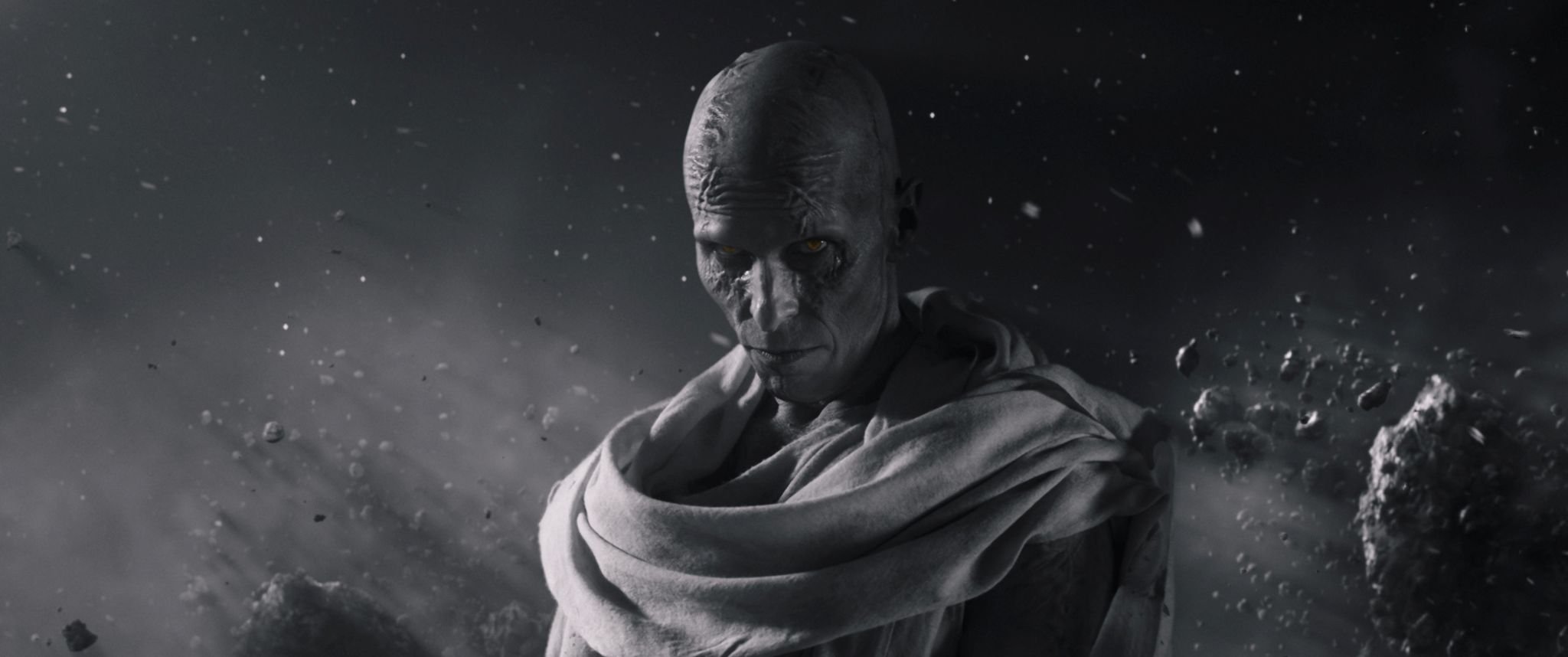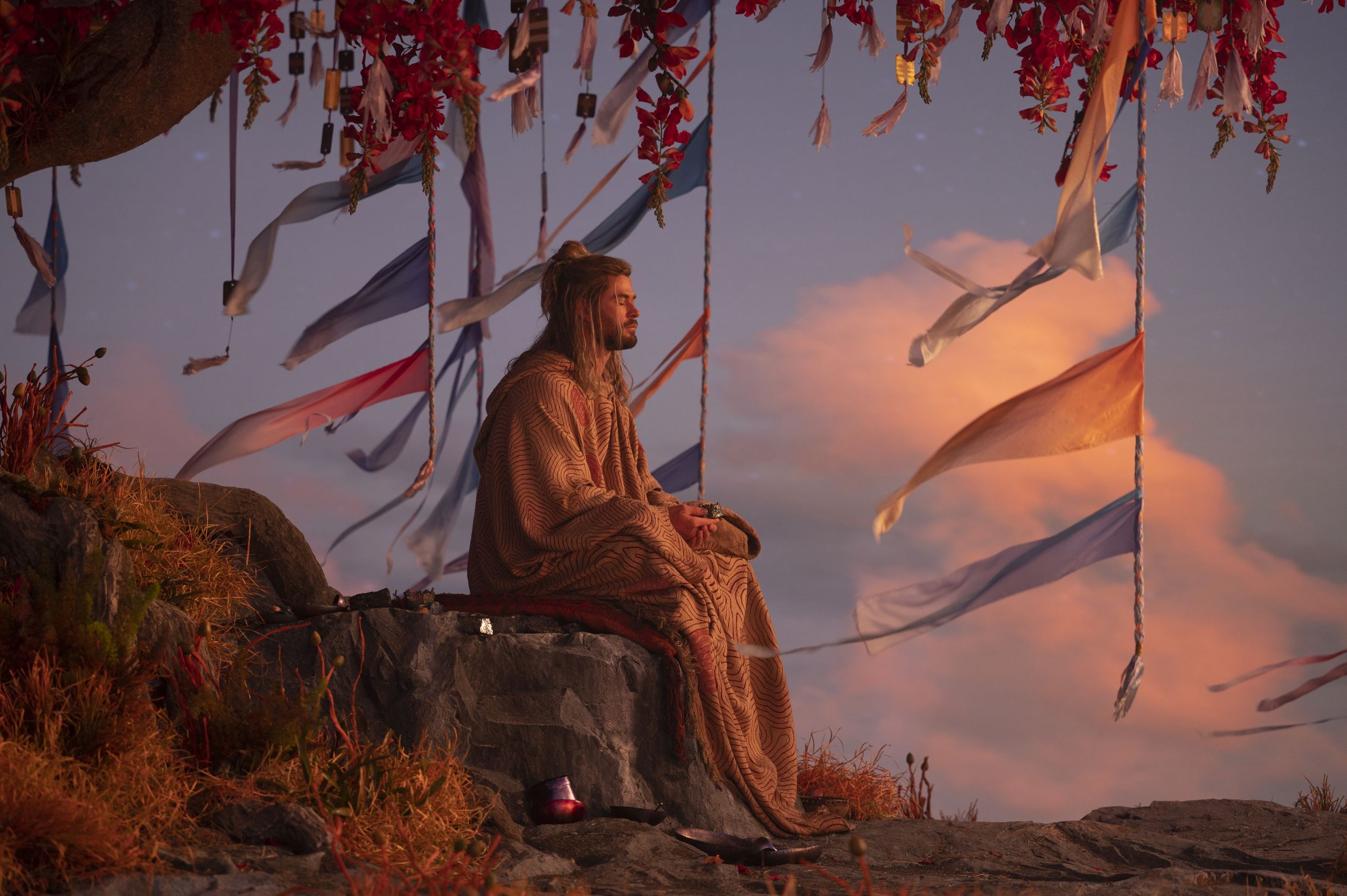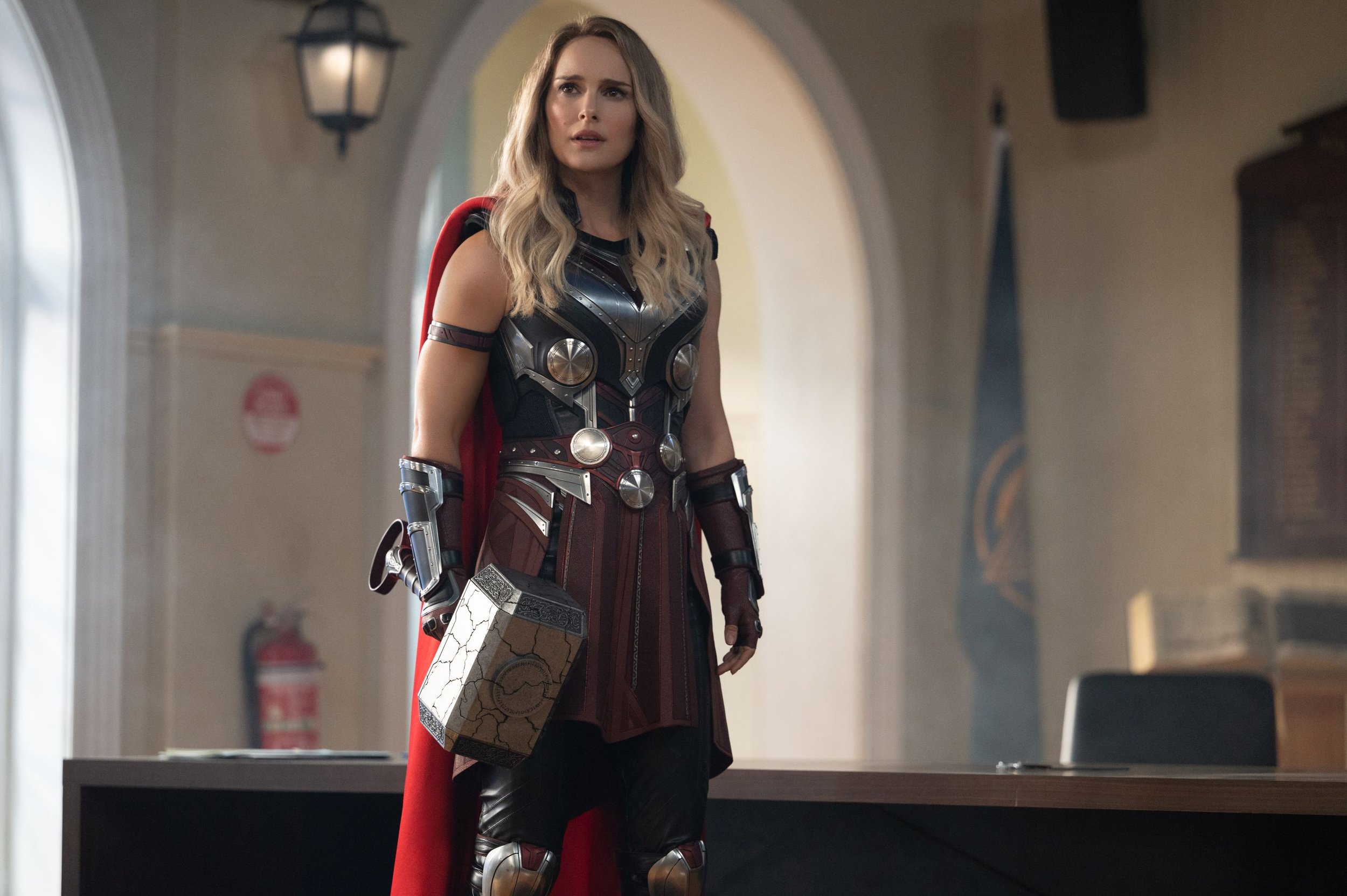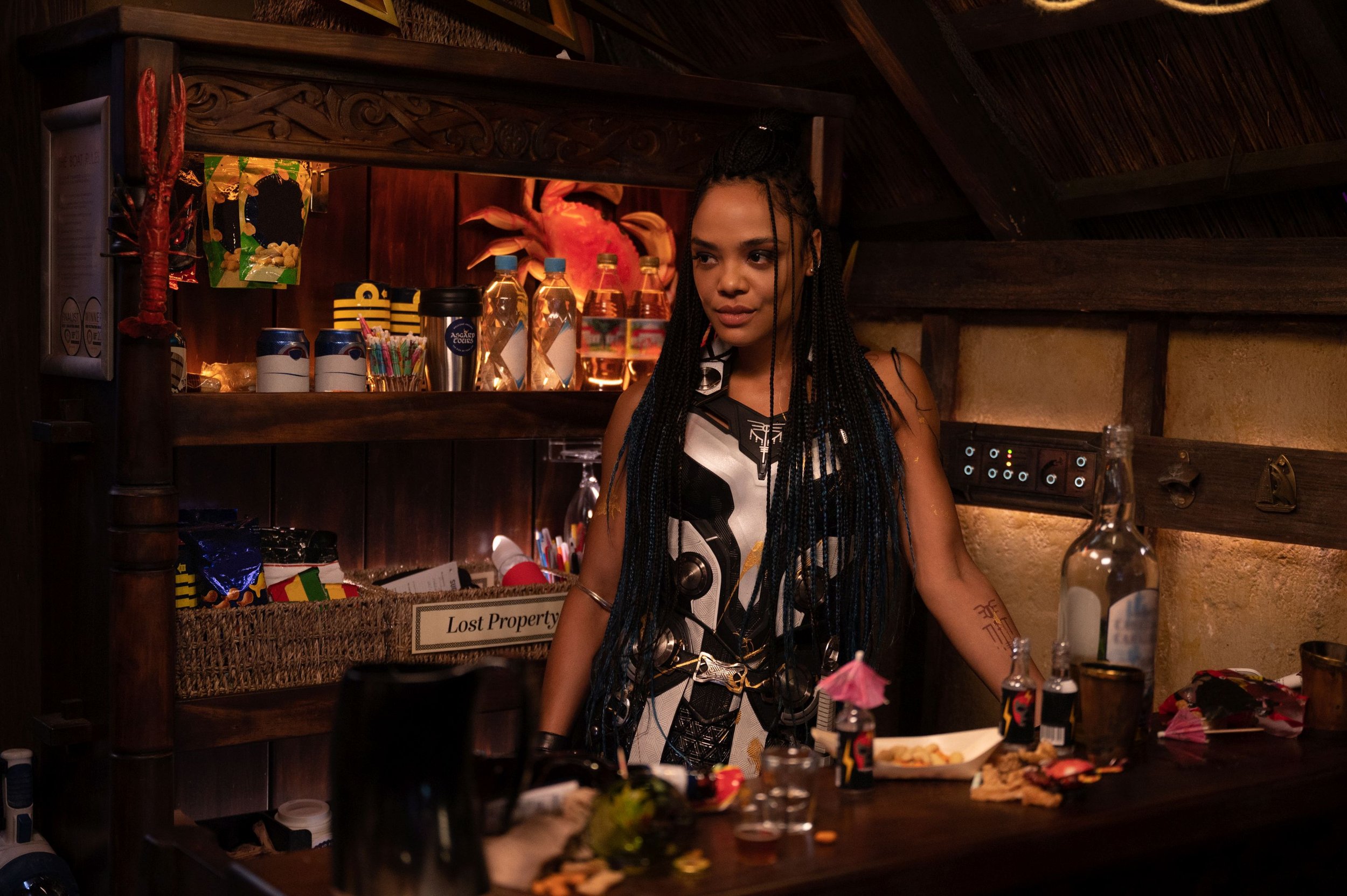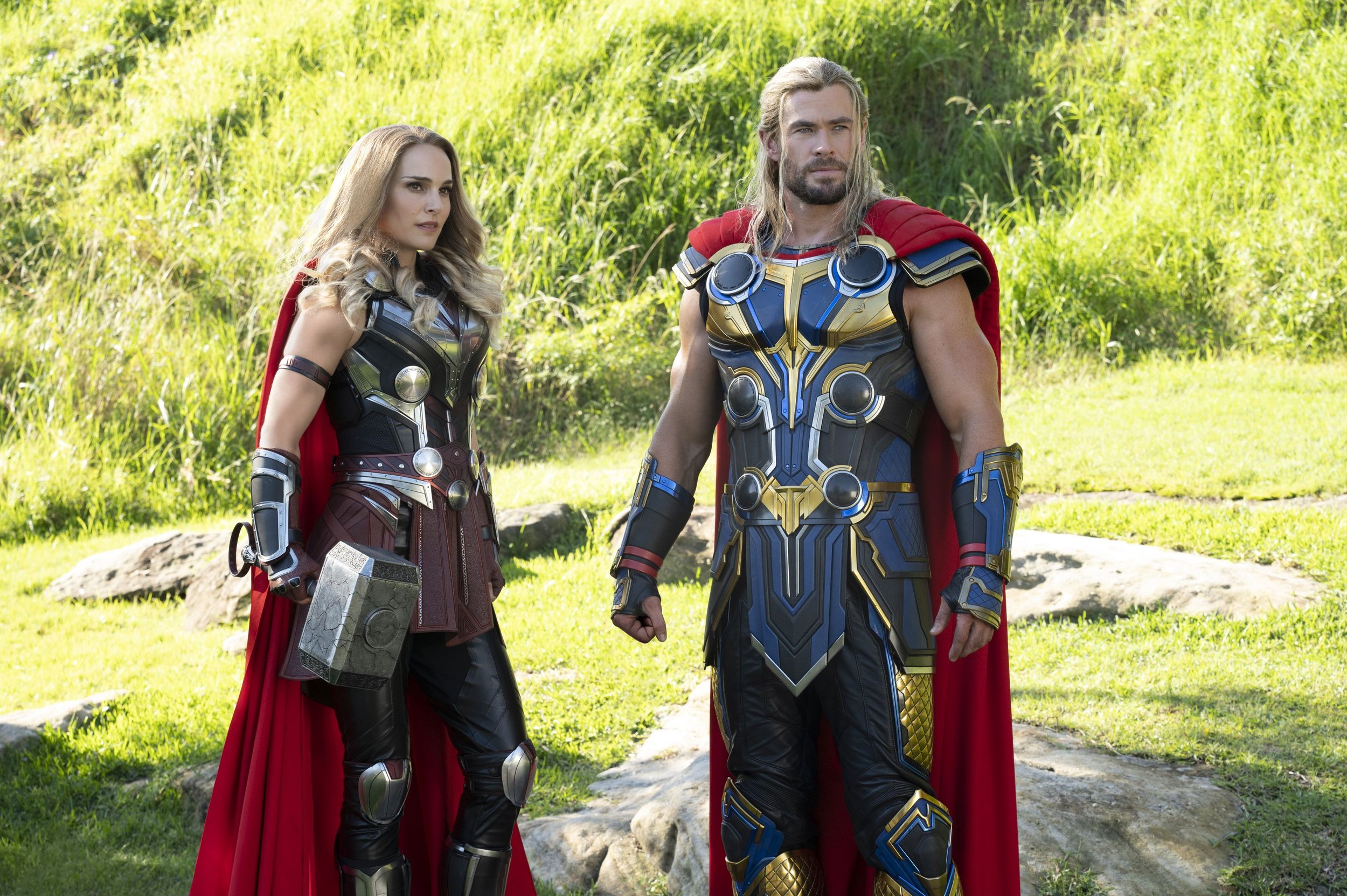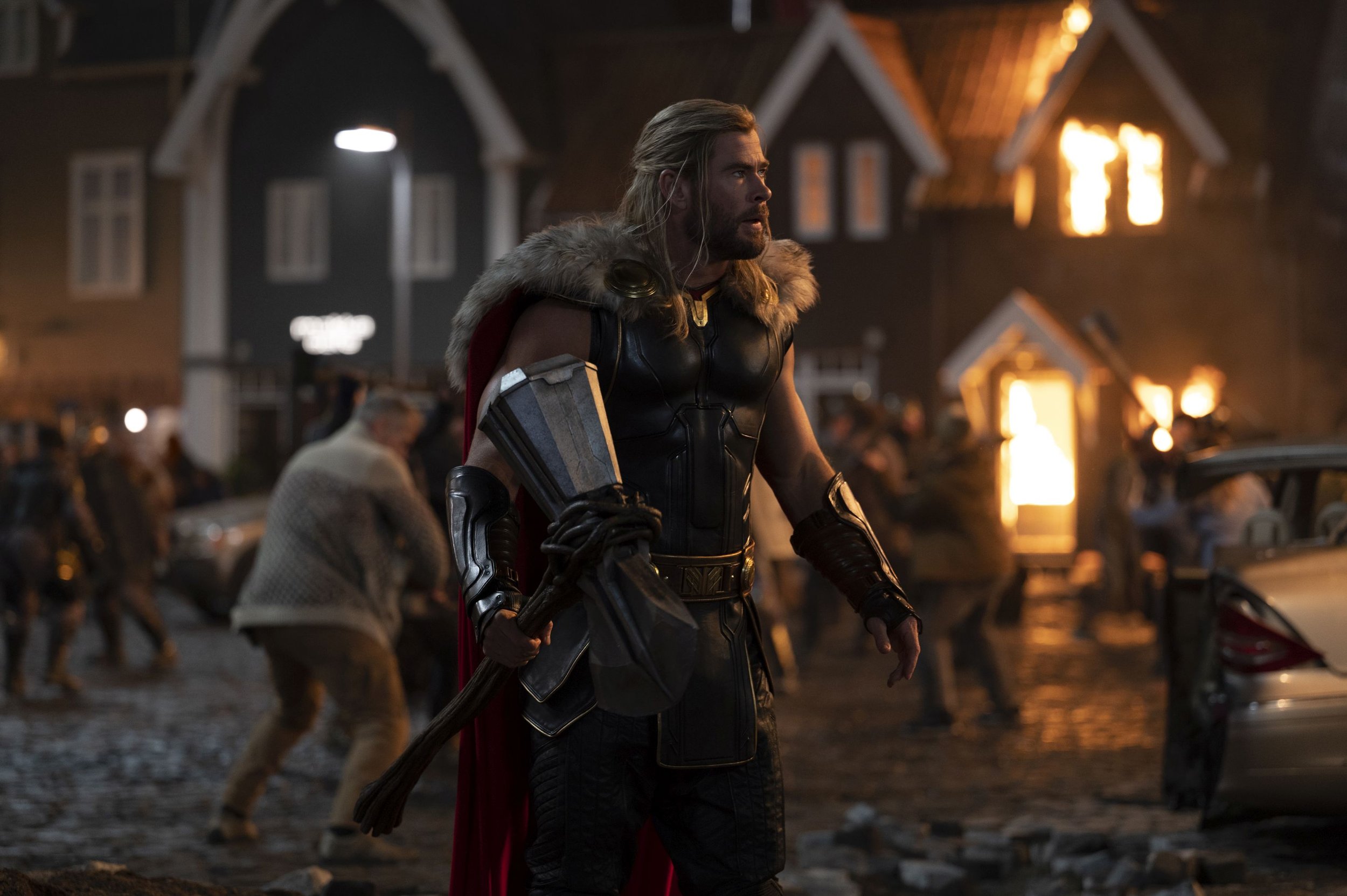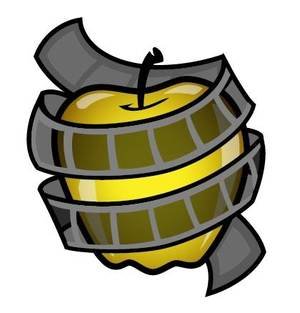MOVIE REVIEW: Thor: Love and Thunder
THOR: LOVE & THUNDER– 2 STARS
LESSON #1: THIS IS THE MOST INCONSISTENT CHARACTER IN THE MARVEL CINEMATIC UNIVERSE– To date, there has not been a more inconsistent main Marvel Cinematic Universe hero than Thor, played by the magnetic Chris Hemsworth across four solo films and five other group or cameo appearances. Over the eleven years since Kenneth Branagh brought him and the higher plane of magic to the big screen, no one has been more hot and cold. He’s happy. He’s sad. He’s buff. He’s not. He’s here. He’s gone. Don’t even start on his hair.
Going into more detail, the God of Thunder has lost one of his eyes, his rippling physique, a stable relationship with the earthly woman he loves, his precious Mjolnir hammer, both of his parents, his brother (multiple times), his half-sister Hela, his closest confidante and guardian Heimdall, all of his Warriors Three fighting comrades, and his entire heavenly home world. No MCU hero, not even Captain America with his century-plus lifespan, has had that much loss dumped upon their broad shoulders of resiliency.
No wonder we’ve also lost count the amount of times whiny doubt has clouded his superpower-connected worthiness. The thing is, over the course of Thor’s movie inclusions, most of those specific losses of people, belongings, and confidence have been conveniently reversed or corrected to the point where they, in the end, barely matter.
Thor’s eye returned in one movie’s time. Mjolnir has been replaced by the bigger and better Stormbreaker with little to no loss of power. Loki is the cockroach that won’t die and is now alive and kicking in the multiverse on his own TV show. Friends like Heimdall and the Warriors Three and even Asgard itself have been replaced by Tessa Thompson’s Valkyrie, the Guardians of the Galaxy, and a quaint Scandinavian village that has turned into a bustling theme park destination for all to adore its heroic founder and champion. The only things (for now, sarcastically) that have stayed dead are Odin and Frigga.
Why the wild inconsistencies? Let’s call it the “Norse Eraser.” From Alan Taylor to the Russo brothers and the current Taika Waititi, every filmmaker wields the most powerful Avenger consequence-free with whatever suits their fancy because folks need their smiling, godly beefcake to always be victorious. Flaws, issues, and losses magically disappear for convenience’s sake with the crack of a lightning bolt or the delivery of a cheeky quip.
But, hey, who cares as long as it’s fun and cool, right? Sure, entertainment will always be the first objective and that’s front and center in Thor: Love and Thunder. However, the fickle and untamed inconsistencies are finally adding up with the new movie. Since more and more of this character and his journey have become a dunderheaded joke, any substantial peril has reached a point where it feels merely temporary or, worse, flaky and flimsy.
This movie’s edition of the “Norse Eraser” rubs away the depression and flab post-Avengers: Endgame to bring back Natalie Portman’s Jane Foster, the demigod’s buff bod, and his unbeatable battle mojo back. A tidy montage shows Thor jumping around the cosmos and kicking alien asses aboard the Milano with Peter Quill (Chris Pratt) and the Guardians of the Galaxy. Sporting a sleeveless leather jacket and Loreal-perfect hair, the son of Odin is the group’s fearsome cleanup hitter who, with the shout of this new catchphrase “This ends here and now,” lays waste to any opponent instantly saving the day with electricity and cheers.
A new opponent is rattling the realms in the form of Gorr, The God Butcher, played by Oscar winner Christian Bale (still an unbelievable get for the MCU). After a tragic opening origin scene designed to create villain sympathy (an overused trope lately in comic book movies), we learn Gorr is out to rid the universe of what he finds to be false and dishonest gods as a way of seeking eternal reward. He possesses the Necrosword capable of killing immortals and boasts an army of shadow monsters moving in and out of the dark.
After dispatching Lady Sif (Jaimie Alexander), New Asgard becomes Gorr’s next target, putting Valkyrie and the citizens of the tourist trap in harm’s way. Meanwhile, Dr. Jane Foster has come to New Asgard to investigate the potential healing properties of the fragmented Mjolnir as she deals with Stage 4 cancer. Sure enough, Mjolnir reconstructs itself in her presence, turning her into a Mighty Thor all her own and momentarily alleviates the disease. When Thor leaves the Guardians of the Galaxy to return to Earth and defend his adopted people, the two former lovers cross paths in their new peak forms.
LESSON #2– FIGHTING THE GOOD FIGHT FOR THOSE WHO CAN’T FIGHT GOOD– Yup, read that lesson line again. If it sounds like something Derek Zoolander would say with his aloof level of ignorant meaningfulness, then you read Thor: Love and Thunder right as well and how this character has devolved. That’s as high of an assertion of purpose the movie attempts, and it rings so stupidly. This sequel doubles that dalliance down by the time Russell Crowe shows up as a Zeus that behaves more like a cruise ship captain than anyone of formidable stature. Any of Thor’s former lofty goals of being truly worthy or the grander reasons to be a hero that forged the character 11 years ago with durable stoicism are forgotten for this kind of half-ass commitment.
LESSON #3: FIND A WAY TO FEEL SHITTY ABOUT SOMETHING OR SOMEONE– If you thought Lesson #2 was a lowered bar, listen to this next one. Staring into the eyes of Portman’s Jane Foster both in and out of battles, the highest heartfelt apex of Thor: Love and Thunder is this emotionally-constipated line of wishing for the passionate flutters that comes with the misery of having someone or something out of your grasp. Gone is the forthright man who will sweep a woman off of her feet with the earthbound chivalry of kissed hands and eloquent monologues of fierce affection. You can see a mile away how this same diluted fortitude will neuter Christian Bale’s heavy by the conclusion. In a roundabout way, this lesson’s line may also instead trigger the fatigue for all this trivial nonsense for stuff that used to be far more resonant.
Those weakened traits of stoicism and romance are part of the “Norse Eraser” used for Thor: Love and Thunder. Everything is an extra step past silly, even while trying to tout Lesson #3’s notion that losing love is the catalyst and corrector of people. Very little time is given to let something dramatic steep into something more important. Anytime hearty feels waver close to actual or permanent vulnerability, a surly gag is ready to wash it away and stomp out the sparks.
Attempts at yet another feature-length existential crisis for our main character add the cushioning landing pad of a guaranteed afterlife in Valhalla. Now, even the prospect of death is a plot curveball of mere inconvenience.
Longtime MCU music supervisor Dave Jordan hijacked four Guns N’ Roses greatest hits from SiriusXM’s “Hair Nation” channel, a sprinkle of booty-shaking R&B throwbacks, and other tone-breaking song selections to give Thor: Love and Thunder a soundtrack trying to be more shredded than its star. The musical trade-off is Nami Melumad and Michael Giacchino’s drowned out score. Following Jurassic World Dominion, this is another rare forgettable effort from the Oscar winner. The headbanging is boisterous for a bit, but makes one long for Patrick Doyle’s original soaring themes to take the spectacle further.
Visually, Thor: Love and Thunder is all over the place. The visual effects supervised by Jake Morrison (his seventh MCU job) follow Thor: Ragnarok’s penchant for neon-tinged explosions of color and pizazz. Like the hopscotch plot, the camerawork steered by first-time feature DP Barry Idoine (The Mandalorian) rarely stays still and, at one point, drops the color altogether for a black-and-white battle sequence. It’s a borderline pointless splash of wannabe style that will make you go, “What in the Zack Snyder is this?!” The answer is the frenetic writer-director Taika Waititi, who is beginning to look like the kind of entertainer that is better in smaller and sharper doses.
The Academy Award-winning Kiwi has, for two movies now, used the “Norse Eraser” himself and morphed the initial grandeur of 2011’s Thor into a second Guardians of the Galaxy funhouse of hammy fun and a big screen action concert for old school rock jams. Thor: Ragnarok counted as a welcome revitalization because Waititi still infused stakes by creating the duo of a hellacious villain in Cate Blanchett’s Hela and a ballsy secondary hero in Tessa Thompson, costing our stud an eye, racking up a sizable body count, and straight-up destroying all of Asgard. That previous movie had cajones that were either erased by the Russo brothers after or abandoned altogether by Waititi this second time around.
LESSON #4: CAN WE PICK A LANE AND STAY THERE?-- If, from here on out, the Thor series is going to stay in Taika Waititi’s control, so be it. Let him own it and be all things Thor. Hemsworth’s natural charisma and self-deprecating personality, put on blast in Thor: Love and Thunder (buns and all) more than it’s ever been in that shiny armor, match the zany route Waititi has taken with this character. Going back to the bold spirit of Branagh’s mythic origins seems difficult, if not damn near impossible, where Waititi and company would be better off sticking with the fluffy cheese and not even trying. For better or worse, this is Thor now, even for those who remember his old and better history. Maybe at least, even in sideshow comedy mode, this character will finally have consistency.
LOGO DESIGNED BY MEENTS ILLUSTRATED (#1050)


